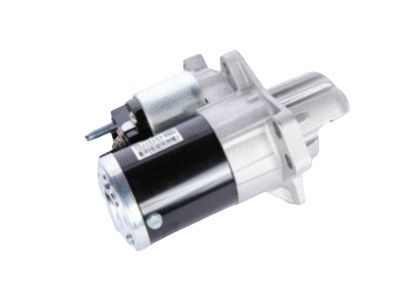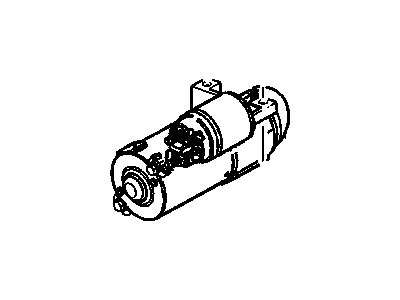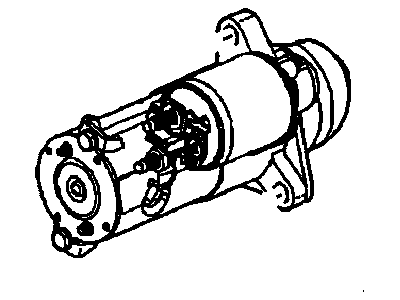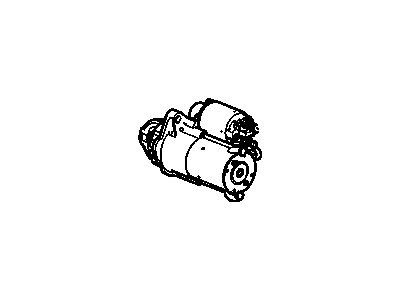
My Garage
My Account
Cart
Genuine Pontiac G6 Starter
Starter Ignition- Select Vehicle by Model
- Select Vehicle by VIN
Select Vehicle by Model
orMake
Model
Year
Select Vehicle by VIN
For the most accurate results, select vehicle by your VIN (Vehicle Identification Number).
6 Starters found
Pontiac G6 Starter Asm
Part Number: 12645298$212.92 MSRP: $401.72You Save: $188.80 (47%)Ships in 1-2 Business DaysPontiac G6 Starter Asm, (Remanufacture) (Pg260D)
Part Number: 89017754$288.81 MSRP: $543.15You Save: $254.34 (47%)Ships in 1-2 Business DaysPontiac G6 Starter Asm, (Remanufacture) (Pg260D)
Part Number: 89017755$306.78 MSRP: $609.74You Save: $302.96 (50%)Ships in 1-2 Business DaysPontiac G6 Starter Asm, (Remanufacture Pg260D)
Part Number: 89017714$254.20 MSRP: $504.88You Save: $250.68 (50%)Ships in 1-2 Business DaysPontiac G6 Starter Asm, (Remanufacture) (Pg260D)
Part Number: 89017756$292.61 MSRP: $550.31You Save: $257.70 (47%)Ships in 1-2 Business DaysPontiac G6 Starter Asm, (Remanufacture) (Pg260D)
Part Number: 89018113$163.64 MSRP: $496.42You Save: $332.78 (68%)Ships in 1-2 Business Days
Pontiac G6 Starter
Part of the Pontiac G6 vehicle, the Starter act as a device that turns electrical power into mechanical power to start the engine. This one is charged by a solenoid that is supposed to be connected to the battery; there is a rotating armature and the field coils are installed into the starter case. There are various kinds of starters, for instance, the gear reduction starters, which clamp onto the flywheel of the engine and connect the drive gear. The starter control circuit, which is made up of the ignition switch and safety switch, closes the solenoid and this results to the engagement of the starter drive gear with the flywheel of the engine. For high power engines it is practically imperative to use a starter that has been specifically designed for that particular application due to the effects of kick back or failure that result from low torque at low timing. In summing up, the Pontiac G6 Starter is important in helping to start the engine in an efficient without any hitches.
Each OEM Pontiac G6 Starter we offer is competitively priced and comes with the assurance of the manufacturer's warranty for the part. Furthermore, we guarantee the speedy delivery of your orders right to your doorstep. Our hassle-free return policy is also in place for your peace of mind.
Pontiac G6 Starter Parts Questions & Experts Answers
- Q: How to remove and install a starter motor on Pontiac G6?A:Take out the negative terminal's cable. Elevate the vehicle and support it safely on stands. For 3.6L V6 models, detach the front knock sensor and also the front catalytic converter. Remove the driveplate service cover for 3.SL and 3.9L V6 models. Disconnect both Battery Cable and starter control cable from starter solenoid in all models. Remove nut, then disconnect the battery cable (Al from B+ terminal, then disconnect starter control cable from starter solenoid terminal(four-cylinder models)). Remove starter mounting bolts and remove it. You will require a socket and extension to remove upper mounting bolt (not shown) before removing lower mounting bolt to separate starter from four-cylinder engine. The installation is opposite to removal one.
- Q: How to deal with starter and starting circuit faults on Pontiac G6?A:If trouble occurs in the starting circuit, don't just assume that the starter is to blame right away. The following are to be checked first: ensure clean and secure Battery Cable clamps on battery, replace any suspect battery cables among them, test battery condition, look at starter solenoid wiring and connections, check for tightness of starter mounting bolts, verify transmission position (PARK or NEUTRAL for automatic transaxles or clutch pedal pressed for manual transaxles), and evaluate Transmission Range (TR) switch adjustment. When the ignition switch is turned to START and the starter does not operate, test for battery voltage to the solenoid by hooking up a test light or voltmeter with an assistant turning the ignition switch to START. If no voltage is present, inspect the starting system circuit. If there is voltage but the starter does not engage, remove it from engine compartment and bench test. Thus where a slow turn over of a starter is encountered, evaluate the starter cranking voltage and battery current draw while comparing those values with specified ones; if they do not meet these values replace it while also looking at condition of battery as well as cold-cranking rating. Last of all if a starter receives voltage but doesn't activate it should be removed and inspected on bench in order to examine operation of solenoid; also viewing its components along with those of a starter.


















